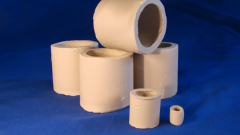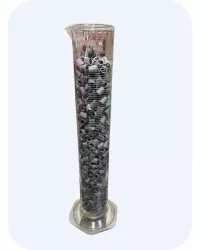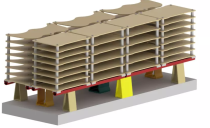
What is a Raschig Ring Used for?
Efficiency and longevity of equipment are paramount in high-temperature industrial processes. Furnace operations are particularly reliant on long-service life materials to ensure minimal downtime and maximum returns on investment. Insulating materials are thus highly specialized to individual furnace formats.
Raschig rings are foundational to random packing methodologies. Named after its inventor, Friedrich Raschig, this small tube-like structure, typically equal in length and diameter, is a powerhouse in packed columns.
Industrial reactors can often be divided into two main types: tower or column reactors and tank reactors. Tower/column types are used mainly for gas-liquid reactions. These feature a column with a height-to-diameter ratio (h/D) greater than 1.0. The interior is filled with random packing materials designed to improve mixing and mass transfer. Raschig rings are among the earliest forms of packing material for reactor towers, and they remain a staple solution today.
What is a Raschig Ring?
Raschig rings are essentially short cylindrical tubes, commonly fashioned from ceramic, metal, or glass, and are characterized by their simplicity, lacking any internal structures. While fundamental to CPI applications, they are often surpassed by newer alternatives in terms of capacity and efficiency, and they can be more costly. Nonetheless, their ceramic variants stand out in scenarios involving corrosive substances thanks to their exceptional resistance to corrosion.

The Role of Raschig Rings in Chemical Reactors
Raschig rings are widely used in CPI applications because they have many advantages that meet the needs of chemical processes.

These cylindrical packings have a large surface area, which is cleverly contained in a small space. This design allows for better interactions between liquids and gases, which is important for efficient distillation and other chemical operations.

The geometry of Raschig rings, with their high surface area relative to volume, is engineered to maximize mass transfer. This design principle ensures an increased contact time between the process stream and the packing, leading to a more effective separation of chemical fractions and the collection of distilled products, often referred to as 'hearts' in distillation parlance.


Chemical resistance is another forte of ceramic Raschig rings. Their ability to resist the corrosive attack of acids, bases, and various solvents makes them indispensable in environments where aggressive chemicals are a norm. This durability against chemical wear translates to a longer lifespan within reactors.
Material Excellence: Silicon Carbide Rings

The thermal conductivity of Hexoloy SiC is another key attribute, facilitating efficient heat transfer within the reactor. This property is crucial in maintaining optimal reaction temperatures and enhancing overall efficiency. Additionally, its low coefficient of thermal expansion (CTE) minimizes the risk of material deformation under temperature fluctuations, further reinforcing its structural integrity.
In the specific context of HCL applications at 1300°C, using Hexoloy SiC Raschig rings as loose fill is particularly advantageous. This application underscores the material’s capability to withstand aggressive acidic environments while maintaining its mechanical strength and thermal properties. The choice of Hexoloy SiC over traditional materials like graphite is further justified by its superior oxidation resistance, ensuring reliability and performance consistency at elevated temperatures.
Hexoloy: The Pinnacle of Silicon Carbide Technology
At Saint-Gobain Performance Ceramics & Refractories, we understand the critical nature of chemical processing and the materials that make it possible. Our Hexoloy sintered silicon carbide is the culmination of intensive research and development, designed to meet the high demands of the chemical processing industry. By choosing Hexoloy Raschig rings, processors are investing not only in superior performance but also the longevity and reliability of their operations
Related Content
Exploring the Advantages of Neutral Ramming Mass (NRM) Solutions
This article expands on neutral ramming masses (NRM), specifically our HeatKing/NORTON brand, delineating its advantages over conventional materials like...
Why Use Fused Cast Refractories for Reheating Furnaces?
Discover why Fused Cast Refractories are essential for efficient steelmaking reheating furnaces. Uncover the role of electrofused refractories in...
Why Choose Silicon Carbide for Kiln Furniture Components?
Discover why Silicon carbide is perfect for creating kiln furniture because of its hardness and chemical and thermal shock resistance.
Want to know more ?
Contact our experts now to explore the development opportunities that await you. Click the button below to fill out the form, and we will be delighted to accompany you on your journey.

